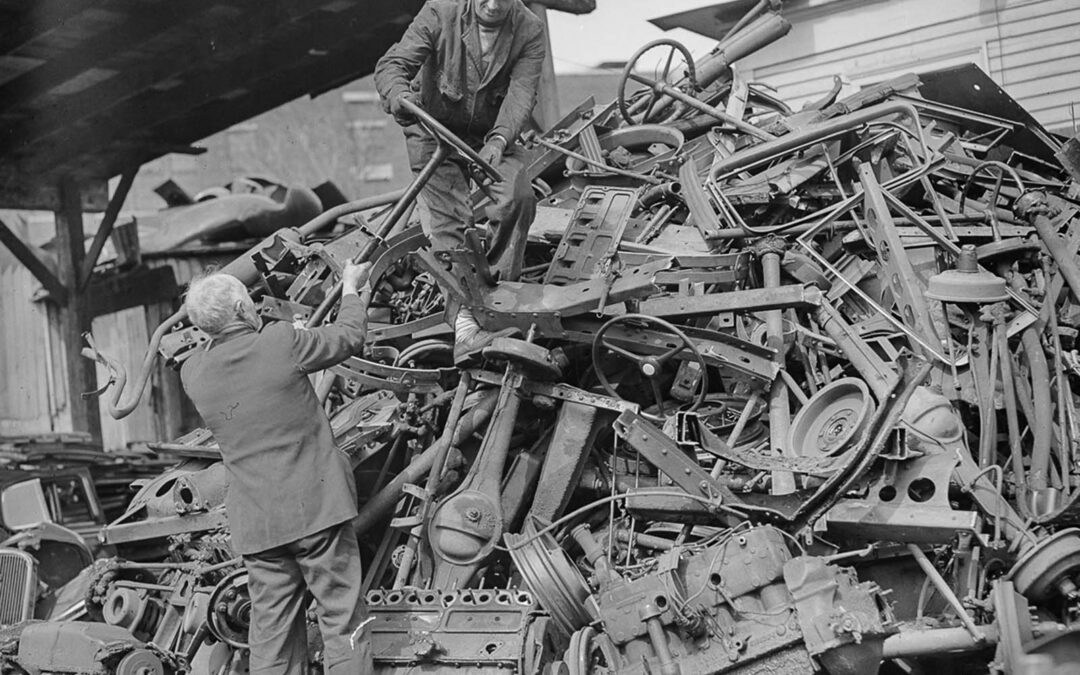We have some pretty fancy gadgets and tools around Bee Green Recycling. When you pull into our covered facility, you’ll pass two bright yellow pylons. They’re sort of like an airport metal detector, but they pick up traces of radioactive materials.
You would be surprised at how many common items contain trace amounts of radioactive materials…
Your first stop upon arrival is our digital scale. We weigh your vehicle when you get here with your scrap, and then again after you’ve unloaded. The difference in weight is the amount of scrap that you dropped off. And that scale is accurate down to a few ounces.
Pretty fancy.
But the basics of recycling have been around since people started making things.
Archaeologists studying ancient civilizations get excited when the find a trash heap, because the items that people throw away tell you a great deal about their daily lives. Even before the sophisticated cultures of the Romans, Greeks, and Egyptians, archaeologists have discovered items in waste heaps that had been reused or repurposed. It was easier to melt down a bronze spear point and reuse it than to create new bronze.
A manuscript from Japan that’s dated to around 1031 talks of shops that sold re-pulped paper. As Europe began to grow and folks began building things, a thriving industry grew around gathering the ash from fires – an important element in brick-making. In larger cities, folks made a fine living by simply going door-to-door with a cart collecting materials like glass, metal, rags and more – all items that could be reused, recycled, or repurposed.

Rita Hayworth
Perhaps the greatest initiative in community recycling was during World War II. The U.S. Government promoted a program called “Scrap for Victory.” While not every able-bodied person could join in the fight against Germany and Japan, every ordinary American could contribute to the war effort. The need for rubber and metal for weapons and supplies far outpaced our ability to create it, and recycling those materials sent them into the hands of the industries creating tanks and guns and ration tins that much faster. It wasn’t uncommon to see the biggest stars in Hollywood, legendary actors and actresses like Clark Gable and his wife Carole Lombard, James Cagney, and Rita Hayworth, appearing in advertisements and on newsreels encouraging you to do your part and donate your scrap to the war effort.
Many of the people who lived through that era were still around as the Environmental Movement matured in the 1970’s. Like folks who remained frugal after living through the Great Depression, they knew the value of recycling. When we began getting serious about protecting Planet Earth and were facing exploding energy costs in the 1970’s, recycling became not only economically sound, it made moral sense.
What we do at Bee Green Recycling isn’t really anything new. We aren’t reinventing the wheel. We’re better at it – more efficient and with the benefit of better tools – but the concept of recycling is as old as time.

Recent Comments